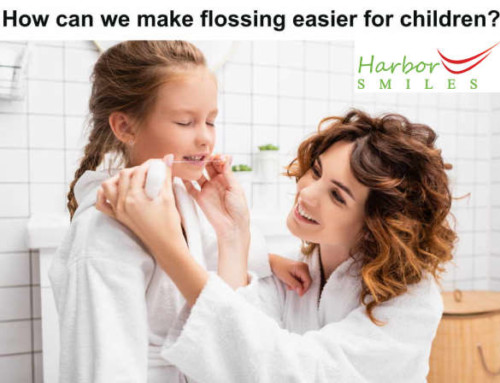When does primary teeth begin to fall out?
 Kids lose their primary teeth at different ages. At 6 years old, a child’s baby teeth (milk teeth) begin to fall out in preparation for the development of adult teeth. Nonetheless, every child is distinct and unique. Some children could lose their first baby teeth as young as four years old, and some may not lose their primary teeth until they reach the age of 7. Frequently, children continue losing their primary teeth till they got to the age of twelve. Deciduous teeth progressively fall out to create room for the eruption of permanent teeth. In the majority of cases, 32 permanent teeth will emerge.
Kids lose their primary teeth at different ages. At 6 years old, a child’s baby teeth (milk teeth) begin to fall out in preparation for the development of adult teeth. Nonetheless, every child is distinct and unique. Some children could lose their first baby teeth as young as four years old, and some may not lose their primary teeth until they reach the age of 7. Frequently, children continue losing their primary teeth till they got to the age of twelve. Deciduous teeth progressively fall out to create room for the eruption of permanent teeth. In the majority of cases, 32 permanent teeth will emerge.
Often, the two upper central incisors, as well as two lower central incisors, are the first to fall out. Lateral incisors, first molars, canines as well as second molars will erupt shortly thereafter. Baby teeth or deciduous teeth frequently fall out in the order in which they emerged. This is the usual chronology in which milk teeth are shed, but it still varies from child to child. Each youngster loses his or her baby teeth in a unique manner and at a different developmental stage.
Read about Innovative ideas to demonstrate flossing to your child
Deciduous teeth, often known as primary teeth, often remain in their sockets till adult teeth emerge and push them out. By and large, this is a simple, natural growth process. If a child loses a primary tooth prematurely as a result of an accident, injury, or dental decay, the gap left by the lost tooth may be replaced by a permanent tooth. This may lead to the crowding of permanent teeth causing their uneven or crooked alignment. Kindly contact your kid’s pediatric dentist if you have any concerns or inquiries.
What Order do kids lose their teeth?
Primary teeth develop when the baby is still in the womb. Around five weeks into gestation, the infant’s jaws develop the first tooth buds. Upon birth, a toddler’s 20 deciduous teeth have almost completed their crowns and are covered behind the infant’s jawbones. Around six months old, the first deciduous teeth begin to emerge. The two bottom front teeth (central incisors) are commonly the first to erupt. The four upper front teeth then show up. Additional teeth then develop over time, frequently in groups of two – one on either side of the top or bottom jaw – until all twenty baby teeth (10 each on the upper and lower jaws) are visible by the time the child is 2 to 3 years old. Beginning at the age of six, the child’s jaws continue to expand in anticipation for the growth of permanent teeth. Baby teeth begin to come out between the ages of six and seven. This process is continued until the child turns 12 years old. While each child’s period of tooth eruption is unique, the manner in which teeth emerge is more consistent. When your child turns 21, he or she should have developed all 32 adult teeth.
What to do with a wiggly tooth?
Allowing a loose tooth to fall out naturally is the right decision. It may be wiggled but shouldn’t be removed quickly because there’s a possibility that an infection might occur or bacteria growing in the socket. If your child’s baby tooth becomes loose, he or she should cautiously wiggle it. Even if the movement is little, daily teeth wiggling helps your child to calculate the level of looseness and prevents unwelcome shocks.
When you wiggle your teeth, the back and forth motion are inadequate to remove the primary tooth from the gums. Rotating it clockwise and afterward counter-clockwise also aids in the extraction of the baby tooth. When the tooth has gotten completely loose and is about to fall out, the following tips and suggestions will benefit you:
- Hold and place an ice cube to the gums on the affected site for a few minutes before wriggling the primary tooth out. This will help numb the gums and make the extraction less uncomfortable or painful.
- A wet tooth is incredibly slippery, which is why you should dry it with a clean tissue since it will be much easier to grasp once it is dry.
- Hold the tooth for five to ten seconds while twisting it in in one direction. Then twist and hold it in the opposite direction. By rotating the baby tooth, the gum fibers are stretched and loosened, enabling the tooth to be extracted more readily from the gums.
Advise your child that he or she may experience a tingling sensation or bleeding may occur when his or her baby tooth has been pulled out. However, reassure your child that everything’s alright since the discomfort or bleeding will subside shortly. Encourage your child to wash his or her mouth with lukewarm saltwater following the extraction. This will decrease any discomfort and help in the reduction of bleeding. Using a damp cloth, add pressure to the freshly formed space between their teeth until the bleeding fully stops. If bleeding or discomfort remains, an oral analgesic (over-the-counter anesthetic) may be administered. If the discomfort, pain, or bleeding doesn’t stop within one hour, contact your dentist. There is no cause to be frightened if your toddler swallows a baby tooth accidentally. Primary teeth are small and regularly reappear.
Bear in mind that even if a tooth is loose, your child should continue brushing, flossing, and eating on a regular basis. Ibuprofen is a great remedy to give them prior to bedtime if they complain of feeling discomfort or pain. While it is generally suggested that you visit a dentist about your kid’s dental care, you don’t actually have to consult a dentist except if your child has a major oral problem. Attend routine checkups and oral hygiene checkups with your child’s pediatric dentist to track their growth and dental health. If your child shows any of the following signs, you should bring them to the dentist:
- Acute pain during the emergence of the teeth.
- Before children reach the age of five or younger, their teeth begin to become loose.
- Eating and brushing teeth becomes more challenging.
- More plaque gathers all around tooth, resulting in irritated or swollen gums.
- The baby tooth was originally loose but has since regained its strength or firmness.
- While the adult tooth has appeared, the primary tooth has not yet become loose.
When Should Parents Worry if Baby Teeth Aren’t Falling Out?
There is typically a large variety in the time at which kids lose their deciduous teeth healthily and naturally. Between the ages of 8 and ten, the majority of parents are concerned and worried about their children’s delayed tooth loss. While nothing looks to be awry in these instances, it is recommended to visit an orthodontist. The problem of your child will then be evaluated through an x-ray conducted by the orthodontist. Parents should not be troubled if tooth loss occurs later than normal unless one of the following situations occurs:
- When there is inadequate room for permanent teeth to come in, overcrowding arises. It is likely that they will be unable to remove the primary teeth directly above.
- At birth, permanent teeth are not visible. A baby tooth will normally remain in place until the permanent tooth beneath it tugs it upward to substitute it. When a child is missing some adult teeth, growth in key parts of the mouth is slowed.
- Excess teeth can prevent the natural development of adult teeth. Your orthodontist can detect whether your child is experiencing a serious tooth problem or is just developing slowly.
Is my child too young to have lost a tooth?
The number one question parents inquire their dentists is whether their child’s primary teeth are coming in too swiftly or too slowly. The time wherein the baby teeth are shed varies and the age at which primary teeth loss is regarded healthy is subjective. Primary teeth seldom emerge prematurely. A child normally loses their first primary tooth at six and the process is finished by the time they hit the age of 12. While this timetable is subject to vary, parents should be concerned if their child loses their first baby teeth before the 3 or 4 years old. The primary teeth are generally lost early because of dental or tooth decay or due to them being knocked out. If your child loses a baby tooth before they’re 6 years old, you should visit and consult a dentist to check if there are any problems or hidden dental traumas.
When deciduous teeth are shed abruptly, it is possible for adjacent teeth to slip out of position. It is because primary teeth function as guides for permanent or adult teeth, aiding them in properly erupting. This can have a significant effect on not just the development of the adult tooth, but also on the eruption and growth of neighboring teeth, resulting in significant alignment abnormalities. Orthodontic treatment may be necessary based on your child’s age and the position of the missing or lost tooth.
Sources:

